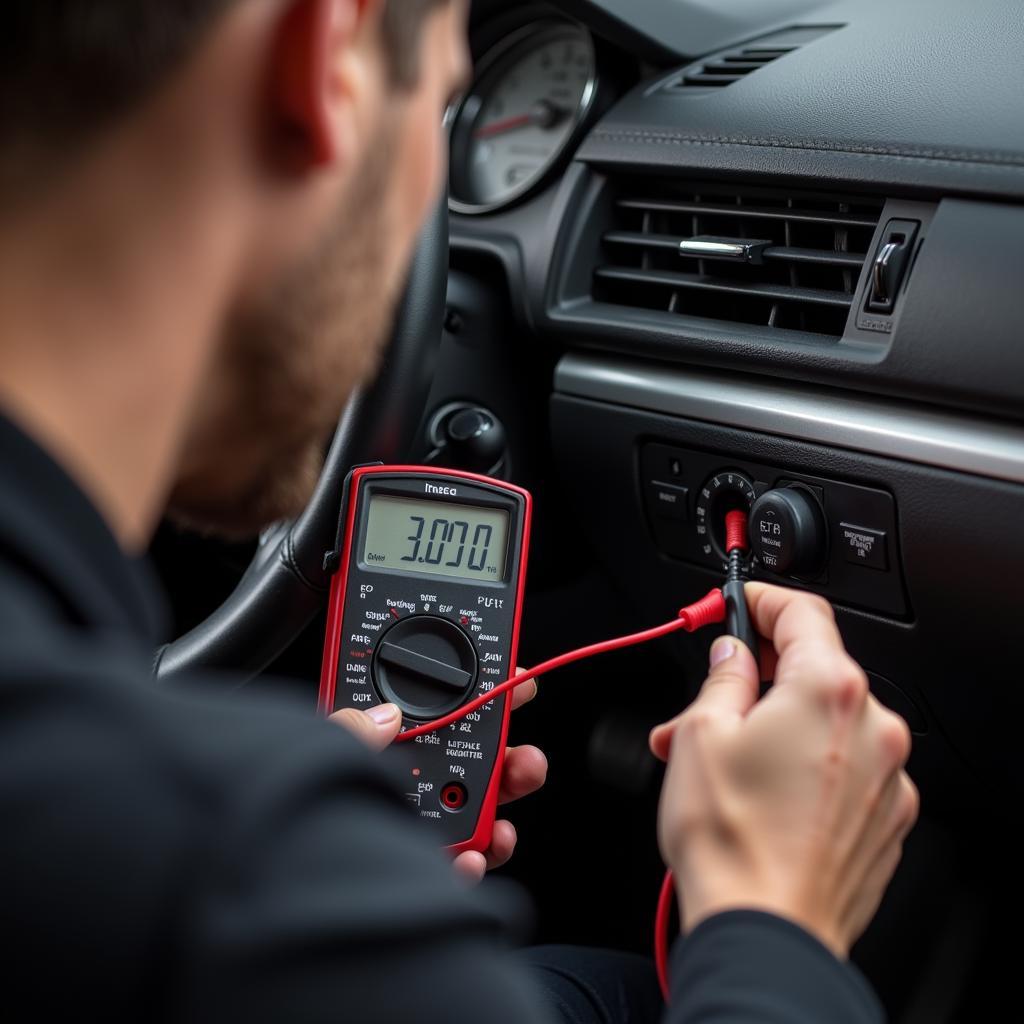Keeping your Honda running smoothly and preventing costly repairs hinges on following a recommended car maintenance schedule. This comprehensive guide dives deep into Honda’s maintenance needs, offering practical advice and expert insights to help you keep your vehicle in top condition. We’ll cover everything from routine checks to major service milestones, ensuring you have the knowledge to make informed decisions about your car’s care.
Regular maintenance is not just about keeping your car running; it’s about safety, performance, and preserving its resale value. A well-maintained Honda is a happy Honda, and this guide will empower you to give your car the care it deserves. What are you waiting for? Let’s dive into the Recommended Car Maintenance Schedule Honda owners need to know.
Understanding Your Honda’s Maintenance Needs
Every Honda model has specific maintenance requirements outlined in your owner’s manual. This manual is your bible for car care, detailing the factory-recommended service intervals for everything from oil changes to spark plug replacements. However, understanding the underlying principles behind these recommendations is equally important. Factors like driving conditions, climate, and even your driving style can influence how often your Honda needs certain services. For example, frequent stop-and-go city driving puts more strain on your brakes and transmission than highway cruising, necessitating more frequent maintenance.
Knowing how often should you get maintenance on your car is crucial. By understanding these principles, you can tailor the recommended car maintenance schedule Honda provides to perfectly suit your individual needs and driving habits.
Decoding the Honda Maintenance Minder System
Many modern Hondas feature the Maintenance Minder system, a sophisticated onboard computer that tracks driving conditions and alerts you when specific services are due. This system goes beyond simple mileage-based schedules, taking into account factors like engine operating temperature and driving habits to provide more accurate maintenance recommendations. The Maintenance Minder system displays a series of codes, each corresponding to a specific set of maintenance tasks. Understanding these codes is key to ensuring your Honda receives the right service at the right time.
While the Maintenance Minder system is a valuable tool, it’s essential to remember that it’s just a guide. It’s always a good idea to consult your owner’s manual and a qualified Honda technician for personalized advice. If you are unsure how often should i get maintenance on my car, consulting a professional is always a good idea.
Key Maintenance Milestones for Your Honda
Regardless of your specific model or the Maintenance Minder system, certain maintenance tasks are crucial at specific mileage intervals. These milestones represent critical points in your Honda’s life and should be addressed promptly to prevent potential problems.
30,000 Miles: A Major Service Checkpoint
At 30,000 miles, your Honda typically requires a more extensive service that includes replacing the air filter, cabin air filter, fuel filter, and transmission fluid. This is also a good time to inspect your brakes, suspension, and steering components for wear and tear.
60,000 Miles: Keeping Your Engine Healthy
Reaching 60,000 miles often necessitates replacing the timing belt, spark plugs, and serpentine belt. These components are vital for engine performance and longevity, and neglecting them can lead to costly repairs down the road. Wondering how often should i get my car maintenance? Follow your owner’s manual and the Maintenance Minder.
90,000 Miles and Beyond: Long-Term Care
As your Honda approaches 90,000 miles and beyond, continuing with regular maintenance becomes even more crucial. This includes repeating many of the 30,000 and 60,000-mile services, as well as paying close attention to potential wear and tear on components like the suspension, steering, and brakes. Regular inspections and preventative maintenance can help extend the life of your Honda and avoid unexpected breakdowns.
“Regular preventative maintenance is the key to a long and healthy life for your Honda,” advises John Davis, a certified Honda Master Technician with over 20 years of experience. “Don’t wait for problems to arise; address them proactively.”
DIY vs. Professional Honda Maintenance
While some routine maintenance tasks, like checking your tire pressure and fluid levels, can be easily performed at home, more complex procedures are best left to the professionals. A qualified Honda technician has the expertise, tools, and experience to diagnose and address potential issues quickly and efficiently. How often should you get maintenance check on your car? It depends, but having a professional look it over is always a good idea.
“Attempting complex repairs yourself can lead to further damage and ultimately cost you more in the long run,” cautions Sarah Miller, a seasoned automotive expert and consultant. “Invest in the expertise of a qualified technician for peace of mind and optimal vehicle performance.”
Conclusion
Following a recommended car maintenance schedule Honda provides is essential for preserving your vehicle’s performance, reliability, and resale value. By understanding your Honda’s specific needs, utilizing the Maintenance Minder system, and addressing key maintenance milestones, you can ensure your car remains a reliable companion for years to come. If you’re looking for guidance on where can i learn basic car maintenance, countless resources are available online and in libraries.
For expert advice and assistance with your Honda’s maintenance needs, connect with us at AutoTipPro. We are dedicated to providing top-notch automotive care and helping you keep your Honda in optimal condition. Call us at +1 (641) 206-8880 or visit our office at 500 N St Mary’s St, San Antonio, TX 78205, United States.






Leave a Reply